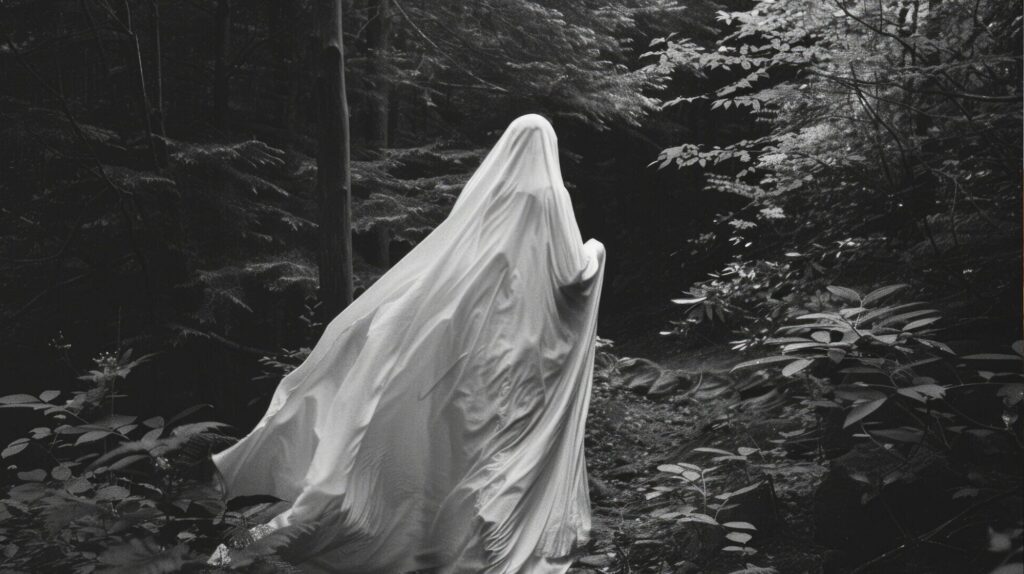The Ultimate Guide to thesweets337

has captivated hearts across the globe for centuries. It is more than thesweets337 just a treat; it is a journey through time, culture, and craftsmanship. But what makes chocolate so irresistible? Is it the rich, creamy texture that melts in the mouth or the intoxicating aroma that fills the senses? Perhaps it is both, and so much more. In this article, we embark on a poetic exploration of chocolate’s journey from bean to bar, unveiling the secrets behind its magic and its profound impact on humanity.
1. The Origins of Chocolate
1.1 The Ancient Roots: Chocolate in Mesoamerica
Chocolate’s story begins in the lush rainforests of thesweets337 Mesoamerica, where the ancient Maya and Aztec civilizations first discovered the hidden potential of the cacao tree. They revered the cocoa bean, not only as a source of sustenance but also as a sacred gift from the gods. The beans were ground into a bitter beverage, often spiced with chili and consumed in rituals and ceremonies. For the Maya, it was a symbol of fertility and life, a divine potion that connected the earth to the heavens.
1.2 Chocolate in the Age of Exploration
When European explorers encountered chocolate, they were thesweets337 initially baffled by its bitter taste. However, it wasn’t long before sugar was introduced, transforming chocolate into a sweet delicacy that took Europe by storm. It quickly became a symbol of luxury and sophistication, gracing the courts of royalty and the tables of the elite. The journey of chocolate had just begun, evolving from a sacred drink to a coveted commodity.
2. The Cocoa Bean: The Heart of Chocolate
2.1 The Anatomy of a Cocoa Bean
At the heart of every chocolate bar lies the cocoa bean. Encased in a colorful pod, these beans are filled with potential, waiting to be unlocked. Each bean contains a complex blend of flavors, from fruity and floral to nutty and bitter. It is this complexity that makes chocolate so versatile, capable of being crafted into a multitude of flavors and forms.
2.2 Cultivation: From Tree to Harvest
The cultivation of cocoa is an art in itself. The thesweets337 cocoa tree thrives in the shade of the rainforest canopy, nurtured by the rich soil and warm climate. Harvesting the pods is a delicate process, requiring skill and precision to avoid damaging the tree. Farmers often use machetes to carefully cut the pods from the branches, a practice that has been passed down through generations.
3. From Harvest to Fermentation
3.1 Harvesting Techniques: Traditional vs. Modern
Harvesting cocoa is a labor-intensive process that varies by region. In some areas, traditional methods are still employed, where farmers handpick each pod with care. In others, modern machinery has been introduced to speed up the process, though this comes with its own set of challenges. The choice between traditional and modern methods often depends on the desired quality and sustainability practices of the farm.
3.2 The Fermentation Process: A Critical Step
Once harvested, the cocoa beans undergo fermentation, a crucial step that develops their flavor profile. The beans are placed in shallow containers and covered with banana leaves, where they ferment for several days. This process not only enhances the beans’ flavor but also reduces bitterness, setting the stage for the rich, complex taste of chocolate.
4. Roasting and Grinding: Unlocking Flavors
4.1 The Art of Roasting: Time and Temperature
Roasting is where the magic truly begins. The beans are roasted at precise temperatures, unlocking the rich flavors hidden within. This step is critical; too little heat, and the flavors remain muted; too much, and they can become bitter. The aroma of roasting cocoa beans fills the air, a tantalizing hint of the delights to come.
4.2 Grinding: From Cocoa Nibs to Cocoa Mass
After roasting, the beans are cracked open to reveal the nibs, which are then ground into a fine paste known as cocoa mass. This process releases the cocoa butter, giving chocolate its smooth, creamy texture. The grinding process is both an art and a science, requiring the perfect balance of pressure and friction to achieve the desired consistency.
5. Conching and Tempering: Crafting the Perfect Bar
5.1 Conching: Enhancing Texture and Flavor
Conching is a delicate process that further refines the chocolate, smoothing out its texture and enhancing its flavor. The chocolate is continuously mixed and aerated, allowing for the evaporation of undesirable acids and the development of a velvety mouthfeel. This step can take hours or even days, depending on the desired quality of the chocolate.
5.2 Tempering: Achieving the Perfect Snap
Tempering is the final step in crafting the perfect chocolate bar. This process involves carefully heating and cooling the chocolate to stabilize the cocoa butter crystals, resulting in a shiny, smooth finish and a satisfying snap when broken. Properly tempered chocolate not only looks beautiful but also melts flawlessly in the mouth.
6. Chocolate Varieties and Their Unique Traits
6.1 Dark, Milk, and White Chocolate: What Sets Them Apart
Chocolate comes in many forms, each with its own unique characteristics. Dark chocolate is known for its intense, robust flavor, with a higher percentage of cocoa solids and less sugar. Milk chocolate is creamier and sweeter, often with a touch of vanilla. White chocolate, although not technically chocolate as it contains no cocoa solids, is loved for its rich, buttery flavor.
6.2 Specialty Chocolates: Single-Origin and Bean-to-Bar
In recent years, there has been a growing interest in specialty chocolates, such as single-origin and bean-to-bar varieties. Single-origin chocolates are made from beans harvested from a specific region, allowing the unique flavors of that region to shine. Bean-to-bar chocolates emphasize transparency and craftsmanship, with chocolatiers involved in every step of the process, from sourcing to packaging.
7. Health Benefits and Myths of Chocolate
7.1 The Antioxidant Power of Chocolate
Chocolate, especially dark chocolate, is rich in antioxidants known as flavonoids, which have been shown to improve heart health, reduce inflammation, and even lower blood pressure. Consumed in moderation, chocolate can be a part of a healthy diet, offering a sweet indulgence with potential health benefits.
7.2 Debunking Common Myths: Chocolate and Weight Gain
While chocolate is often blamed for weight gain, the truth is more nuanced. It is not the chocolate itself but rather the sugar and fat content in certain varieties that can contribute to weight gain. Choosing high-quality dark chocolate with a higher cocoa content and less sugar can allow you to enjoy this treat without the guilt.

8. The Cultural Significance of Chocolate
8.1 Chocolate in Rituals and Celebrations
Chocolate has long been a part of human culture, used in rituals, celebrations, and ceremonies. From the ancient Mayans to modern-day festivals, chocolate is often associated with joy and indulgence. It is a symbol of love on Valentine’s Day, a treat for Halloween, and a luxurious gift during the holidays.
8.2 The Evolution of Chocolate in Pop Culture
In contemporary society, chocolate has also become a staple in pop culture, from iconic advertisements to its starring role in literature and film. Who can forget the whimsical world of Willy Wonka or the soothing comfort of a hot cup of cocoa on a winter’s day? Chocolate continues to be a beloved treat that transcends generations and cultures.
9. Sustainability in the Chocolate Industry
9.1 The Ethical Challenges: Fair Trade and Child Labor
The chocolate industry faces significant ethical challenges, including issues related to fair trade and child labor. Many cocoa farmers live in poverty, and unethical practices have led to child labor and exploitation. The move towards fair trade certification aims to ensure that farmers receive a fair price for their crops and that ethical practices are upheld.
9.2 Innovations in Sustainable Chocolate Production
Sustainability in chocolate production is becoming increasingly important, thesweets337 with innovations focusing on reducing the environmental impact and improving social responsibility. This includes everything from eco-friendly packaging to supporting biodiversity and implementing more sustainable farming practices.
10. Expert Insights: The Craft of Chocolatiers
10.1 An Interview with a Master Chocolatier
To delve deeper into the art of chocolate making, we spoke with a master chocolatier who shared insights into the craft, the passion that goes into each bar, and the meticulous attention to detail required to create a perfect product. From selecting the finest beans to the final touches, every step is a labor of love.
10.2 The Rise of Artisan Chocolate
Artisan chocolate has seen a resurgence in recent years, with small, thesweets337 independent chocolatiers crafting unique flavors and pushing the boundaries of traditional chocolate making. These artisans often focus on ethical sourcing, transparency, and creativity, offering chocolate lovers a more personalized and refined experience.
11. Future Trends in Chocolate
11.1 Emerging Flavors and Ingredients
The world of chocolate is constantly evolving, with new flavors and ingredients being introduced all the time. From exotic spices to unexpected fruits, chocolatiers are experimenting with bold combinations to create new and exciting flavors.
11.2 The Future of Chocolate in a Changing Climate
Climate change poses a significant threat to cocoa production, with rising temperatures and changing weather patterns affecting crop yields. The future of chocolate will depend on the industry’s ability to adapt to these changes, with a focus on sustainable practices and innovative solutions.
12. Practical Tips for Choosing Quality Chocolate
12.1 Reading Chocolate Labels: What to Look For
When thesweets337 choosing chocolate, it is important to read the labels carefully. thesweets337Look for high cocoa content, minimal ingredients, and certifications such as fair trade or organic. These indicators can help you choose a high-quality product that is both delicious and ethically produced.
12.2 Tips for Tasting Chocolate Like a Connoisseur
To fully appreciate chocolate, it is important to savor it slowly. Allow the chocolate to melt on your tongue, noting the different flavors and textures. Pairing chocolate with wine, cheese, or fruit can also enhance the tasting experience, allowing you to discover new flavor combinations.
13. Conclusion
13.1 Recap of the Chocolate Journey
The journey of chocolate from bean to bar is a fascinating thesweets337 tale of culture, history, and craftsmanship. From its ancient roots in Mesoamerica to its rise as a global delicacy, chocolate has captured the hearts of many. Each step in its creation is a testament to the skill and passion of those who craft it.
13.2 Final Thoughts and Call to Action
As we indulge in the sweet pleasures of chocolate, thesweets337 it is important to remember the journey it takes to reach us. By choosing ethically produced chocolate and supporting sustainable practices, we can enjoy this treat while making a positive impact on the world.
14. FAQs About Chocolate
14.1 Is Dark Chocolate Healthier Than Milk Chocolate?
Yes, dark chocolate is generally considered healthier than milk chocolate because it contains a higher percentage of cocoa, which is rich in antioxidants. However, moderation is key, as all chocolate contains sugar and fat.
14.2 How Should Chocolate Be Stored?
Chocolate should be stored in a cool, dry thesweets337 place away from direct sunlight and strong odors. It is best kept at a temperature between 15-20°C (59-68°F) to maintain its texture and flavor.
14.3 What Is the Best Way to Melt Chocolate?
The best way to melt chocolate is to use a double boiler or microwave, ensuring that it is melted slowly and gently to prevent burning. Stirring frequently helps achieve a smooth, even melt.



